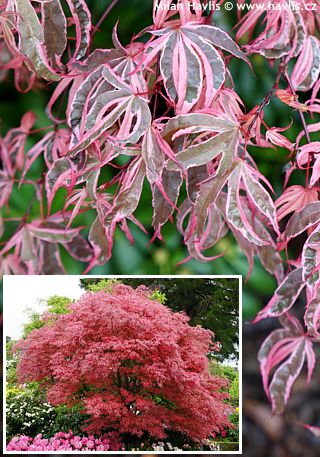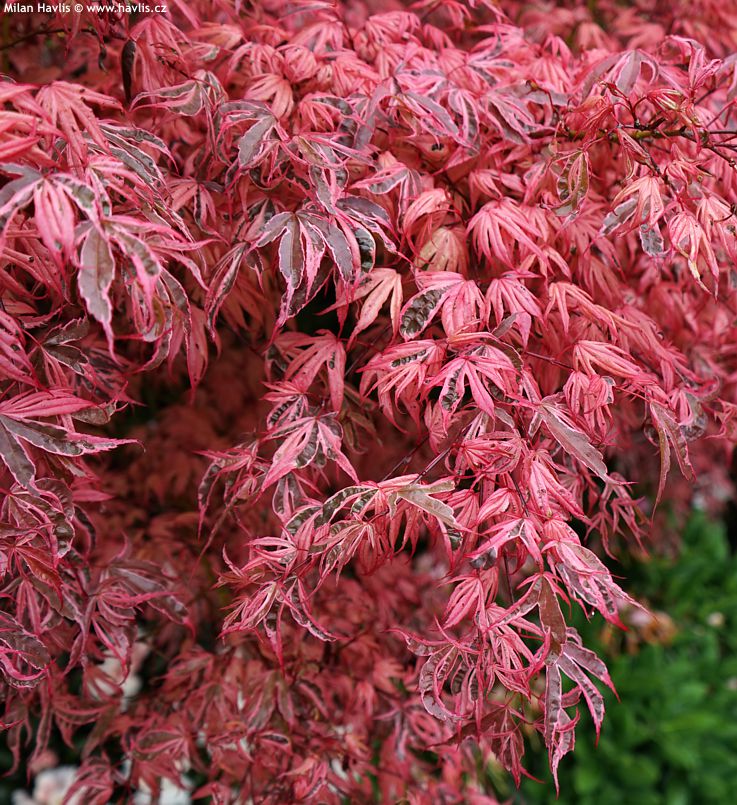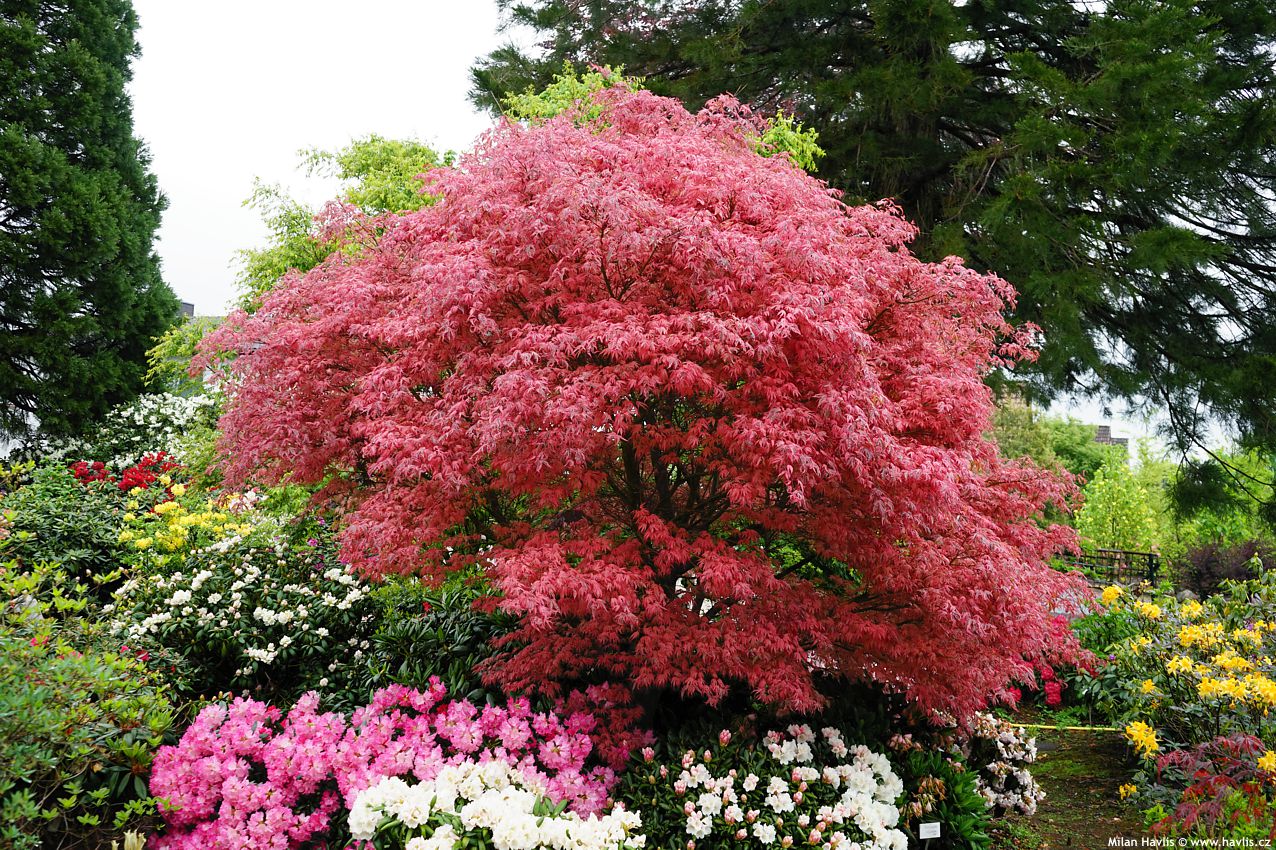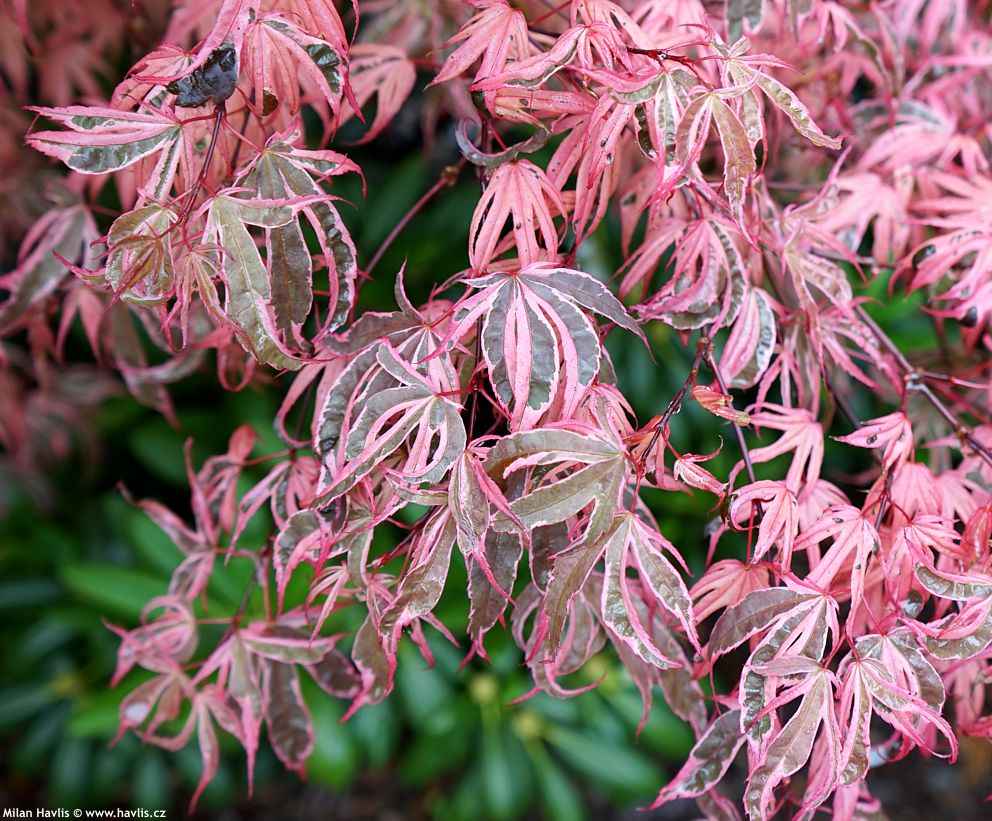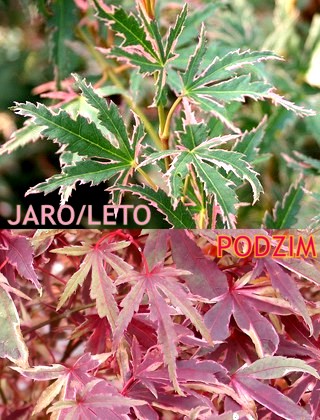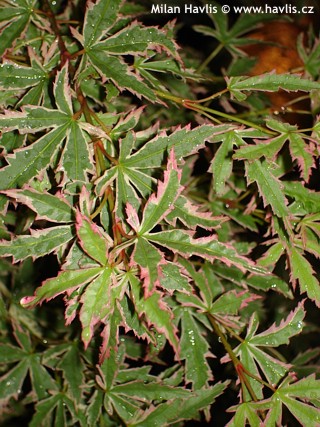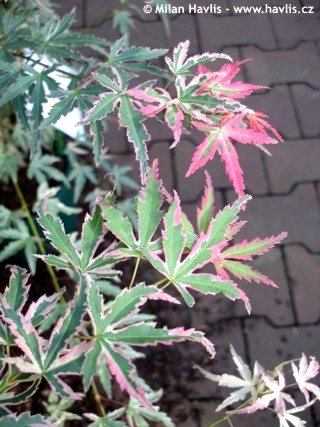Acer palmatum 'SHIRAZZ' Japanese maple
size/type
medium-sized shrub,medium-sized shrub
usual height
2-3m
usual width
2-3m
leaves
deciduous broadleaf
colour of leaves
flowers
insignificant or non-blooming
location
full to partial sun
soil type
acidic (peaty)
soil moisture requirements
evenly moist (dislikes drought)
USDA zone (lowest)
5b (down to -27°C)
winter protection
for zone 5+6

for zone 7

categorized
Acer
Japanese maples are very decorative and usually low shrubs, occasionally small trees, with attractive foliage and picturesque structure. There are many varieties in various shades of green, chartreuse, golden and yellow, red to maroon, and even multicoloured (variegated). They originate from Asia (Japan, China, Korea), where they have been cultivated for at least two centuries or perhaps even longer, however, they were introduced to Europe only at the beginning of the 19th century, specifically to Great Britain in 1820. Interestingly, the botanist Carl Peter Thunberg described them much earlier, in 1784, because he undertook an expedition to Japan in 1775-1776, discovering new species and collecting seeds and plants. He named the tree Acer palmatum, referring to the leaf shape resembling a human hand with fingers, although it is said that they first reminded him of frog fingers, which is also one of its oldest Japanese names: kaede. The other is momiji (baby hands). The beauty of the colours and shapes of the leaves and trees is reflected in many arts, for example, in the oldest preserved collection of Japanese poetry from the 8th century, the Man'yōshū (Collection of Ten Thousand Leaves). The Chinese poet Wang Wei (699-759) celebrated their beauty in many of his works, and naturally, maples often appeared in ancient paintings, tapestries, porcelain, and wherever classic and traditional decorations associated with the symbolism of these maples were desired: beauty and elegance, serenity, endurance, vitality, and transformation.Description of the plant:
Shirazz is another Japanese maple beauty with variegated foliage that changes colours throughout the growing season. The leaves are deciduous, deeply lobed but not in the dissectum group. They emerge rich cherry red and soon mature to mid green with white margins and pink shades of various depths until autumn. Then they turn brilliant carmine red with a little bit of yellow. Shirazz maple forms a wide shrub and grows moderately to slowly. Pruning is not necessary but can be done if you wish to shape it. Its fire-red leaves will look best when accompanied by shrubs of differently coloured foliage. It is an easy-care, hardy plant, which does not need much maintenance.
Japanese maples prefer acidic to neutral soil, moist but well drained, semi-fertile. For best leaf colouring it needs plenty of sun so make sure the roots are well mulched, too. Owing to its reduced size it is suitable for small gardens and front yards, too, as well as large pots. Fully hardy to -24°C (USDA zone 6), plants older than 5 year to -27°C (USDA zone 5).
Last update 24-06-2015
QUICK PRICE OVERVIEW
CURRENTLY SOLD OUT
WANT TO TRY A SIMILAR PLANT?












